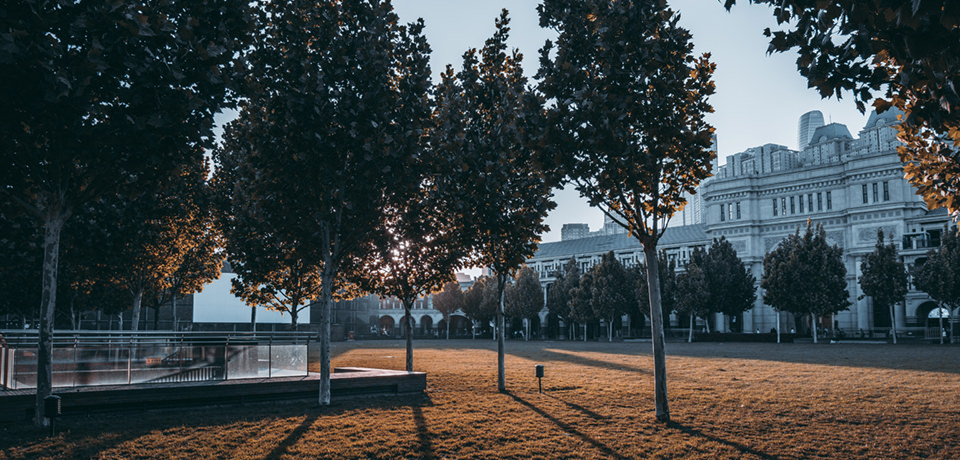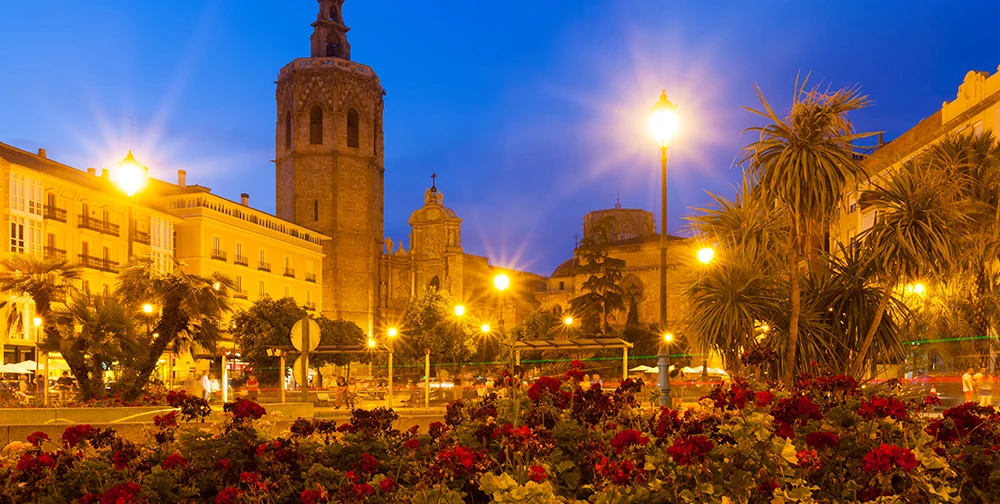Parks and plazas are the places for entertainment and recreation. Most of the residents take a walk or exercise to relax themselves. Illumination for parks and plazas is important for increasing visibility and aiding site navigation at night.
Some of the trees and/or bridges in parks and plazas are decorated with light strips to achieve a more beautiful and attractive landscape. However, more lights do not mean a better lighting experience. It is said that excessive light will reduce visibility paradoxically. Moreover, excessive light may cause lighting pollution. Except for the amount of light, the illumination period should also be taken into account. As most parks and plazas are open and available from 6 am to 11 pm, some of the operators will turn off the lighting fixtures during close time.
Except for former considerations, lighting for parks and plazas seems to be complex and tedious. To handle the parks and plazas' lighting easier, we would like to talk about the 5 basic lighting principles for parks and plazas. In short, parks and plazas should be illuminated with minimum lighting fixtures and lighting levels to avoid lighting pollution and waste of energy.
- First, only install lighting fixtures where needed
- Second, illuminate each location with minimum lighting
- Third, prevent lighting pollution for humans, plants, and animals
- Fourth, the lighting fixtures should be able to withstand the outdoor environment
- Fifth, use cost-effective and energy-saving lighting system
First, only install lighting fixtures where needed
Illumination for parks and plazas should be limited and just install lighting fixtures for the areas that are genuinely need lighting. For example, illumination for roads and streets is unnecessary as those places exceed the range of parks and plazas. Conservation and preservation areas should not be equipped with lighting fixtures commonly to protect nature and wildlife. Artificial lighting will trespass the habitats of wildlife. The major purpose of installation of lighting fixtures is to ensure the capacity of wayfinding, over quantity of lighting fixtures will not only cause higher cost but also greater energy consumption. Lighting fixtures should be installed for the areas with higher activities and the possibility of accidents when it is dark.

Second, illuminate each location with minimum lighting
According to the classification of the Illumination Engineering Society of North America (IESNA), parks and plazas are places with extremely low ambient light levels. The lighting requirements of parks and plazas are lower than most commercial lighting. The main purpose of parks and plaza illumination is to guide the way for residents. A high level of lighting will disturb the relaxing atmosphere. As a result, illuminating each location with minimum lighting is bright enough for parks and plazas. Illumination for each location should based on the activity level and lighting needs. The following table shows the lighting recommendations for different parts of parks and plazas.
Lighting Situation Type |
Lighting Recommendations |
Illumination Criteria (Average) |
|
Walkways and bikeways - high night activity |
Relatively uniform lighting for walkways and bikeways, but not necessarily uniform |
0.2 fc |
|
Walkways and bikeways - medium night activity |
Lighting for main and secondary walkways and bikeways, but not necessarily uniform. |
0.1 fc |
|
Walkways and bikeways - low night activity |
Minimal wayfinding lighting for the main walkway only |
0.1 fc |
|
Plazas and grounds - developed and active area |
Uniformity is not critical, Increase lighting at terrain changes and where accessibility issues require |
0.1 fc |
|
Steps |
Minimal wayfinding lighting for every step |
0.1 fc |
Third, prevent lighting pollution for humans, plants, and animals
Lighting pollution includes artificial sky glow, trespass, and glare. The upward light obscures the dark sky, resulting in more difficult astronomy observation. While the sideward light lit up surrounding areas that do not need illumination, causing light trespass. Glare will cause visual discomfort or disability.
Lighting pollution is not only harmful to human health but also the plants and animals. Humans are daytime species. So do most of the animals. The biological rhythm of humans, plants, and animals is affected by lighting.
Artificial fixtures extend the illuminated period at night, but over-lighting will drop the melatonin that helps sleep cycles, being harmful to human health. Animals, like fish, are attracted to the light at night and they will try to approach lighting. The leave from natural depths threatens their survival due to the lack of awareness of navigation and danger. Long-time exposure to artificial lighting may modify the resistance to disease and bad weather of plants.
Generally speaking, lighting pollution results in poorly shielded light. Full cut-off artificial fixtures are eligible for parks and plazas as the widespread lights are shielded and limited in glare zones. Bollard lights are widely used for parks and plazas with minimum lighting pollution and appreciate illuminance, fully filling the need for increasing visibility and offering way guidance for visitors. The shortcoming of the bollard light is the susceptibility to vandalism due to the lower height around 3.5 feet.

Amber lighting is an excellent option for minimizing the harmful impact on wildlife. Its warm, gentle glow is less likely to disturb animals or disrupt their natural circadian rhythms, making it a more environmentally conscious choice.

Fourth, the lighting fixtures should be able to withstand the outdoor environment
As parks and plazas are located outdoors, lighting fixtures should be able to withstand harsh environments, like heavy rain and/or snow. Heavy rain may impact the fixtures and the water may seep into the interior of the fixtures, damaging the electrical network. Snow may pile up and bend the fixtures. Rain, snow, and dust removal are critical for lighting fixtures to handle the outdoor environment.
The protections for lighting fixtures against outdoor environments include waterproof, dust-proof, anti-corrosion, and mechanical impacts. Numeric classifications for the degree of protection are related to IP rating and IK rating. Water and dust protection levels are mostly expressed by two numbers followed by IP. “I” represents the level of protection against solid matter, the highest level is 6, while “P” represents the level of protection against water, and the highest level is 8. IK rating consists of two numbers, namely IK01, IK02, IK03, IK04, IK05, IK06, IK07, IK08, IK09 and IK10. The higher the number is, the better the protection.
Fifth, use cost-effective and energy-saving lighting system
The lighting system is mainly composed of light sources and controls.
Light source
Light sources should be energy-saving, long lifespan, and low maintenance. The comparison of different light sources is as follows:
Lamp Type |
Incandescent Bulb |
Halogen Lamp |
Fluorescent Lamp |
LED |
|
CCT(K) |
2700 |
2700-3500 |
2700-8000 |
2700-8000 |
|
Efficacy (lm/W) |
6-16 |
16-30 |
70-120 |
80-160 |
|
Lifetime(hours) |
1000 |
1000-3000 |
15000-45000 |
50000 |
|
Application |
Indoor, outdoor |
Indoor |
Indoor |
Indoor, outdoor |
|
Additional info |
High IR radiation |
High IR radiation |
High UV radiation |
Little UV and IR radiation |
|
Hazardous chemical content |
no |
Halogens |
Mercury, Neon |
no |
|
Starting time (to full output) |
slow |
slow |
Fast to Instant |
Instant |
From the table, it is clear that LEDs have a long lifespan of up to 50,000 hours and high efficacy without hazardous chemical content. Therefore, LED lighting fixtures are the ideal option for parks and plaza lighting systems.
Lighting control
The aim of using lighting control is to save energy consumption and electricity bills. Lighting fixtures are off when there is little or no need or the park and plazas are closed. Lighting controls mainly include timer control and motion control.
Timer control:
Time control means the lighting fixtures are turned on or off at certain times set by the parks and plazas operator. Normally, the lights will be on automatically when nightfall and off within 2 hours after sunset. The timer is adjustable according to the illumination needs of parks and plazas.
Motion control:
Motion control is functioned with the help of motion detectors. When visitors pass the lighting fixtures, lighting fixtures are on automatically and then off after a few minutes. Motion control is used at the entrances or the pathways with lower activity. The problem of using motion control is the possibility of annoying on and off lighting circuits. Additionally, the light may be off when visitors are not away from the lighting-detected areas.
Both timer and motion control release the staff of parks and plazas from controlling lighting fixtures manually. But there is an argument about whether to keep the light on late night. Most operators think the light should be totally off after the parks and plazas are closed to ensure the safety of visitors, keeping them away from the parks and plazas. Others claim that the lights should be on even though the parks and plazas are closed to reduce crime and offer illumination for pedestrians.
Parks and plazas ease humans from hard work or home to enjoy nature. Artificial lighting provides illumination for humans to relax at night. But we should note that humans are connected with nature, and keeping proper lighting makes better living environments for humans, animals, and plants. When it comes to parks and plazas lighting, conform to the 5 lighting principles.












